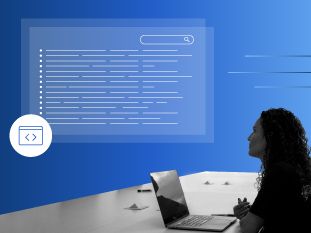
Five Essential Skills for Backend Developers in 2021
There are two parts to learning craftsmanship: knowledge and work” – Robert C. Martin
The word “craftsmanship” describes having skill in a particular craft. For a backend developer, these essential skills might be quality code, debugging, or releasing. In order for a backend developer to truly become a “craftsman,” they first should understand what the essential skills are for their role. Then, they will be able to apply this knowledge to their work and reap the benefits of the results.
In this blog post, I will discuss five skills that are essential to being a successful backend developer in 2021. Nurturing these skills will help backend devs prevent issues, implement best practices, and better explain their work to their teams and clients.
The five essential skills for backend developers we will cover are:
- Understanding API REST definitions and best practices
- Understanding Data Structures
- Choosing the right Design Patterns
- Interacting with Databases
- Implementing Cloud Hosting best practices
1. Understanding API REST definitions and best practices:
This set of protocols is in charge of communicating the backend to the rest of the world. There are millions of APIs that exist in 2021, so it is important to know the general definitions and best practices.
The following are some of the HTTP common methods you should know:
- GET: Retrieve information
- POST: Submit data to the server
- PUT: Save an object at the location
- DELETE: Delete an object at the location
- PATCH: Partially modify a resource
It is important to not just be familiar with these methods but also be aware of the best practices for creating API Rest. You can check this Microsoft Documentation for some suggested approaches to this kind of design.
2. Understanding Data Structures:
The most common tasks of backend developers include sorting, getting, and changing data. Knowing data structures allows you to choose between different solutions in order to find the best fit for your work.
These are some of the essential data structures you should learn:
- Arrays: This is the most common structure, and has two types:
- One-dimensional
- Multi-dimensional
- Stacks and Queues:
- Stacks normally work with the LIFO (Last in First Out) method
- Queues implement the FIFO (First in First Out) method and utilize Push and Pop functionality
- Hash Tables: These are used to uniquely identify objects for quick searches and performance
- Trees: These are hierarchical data structures consisting of nodes and edges and are used for more complex algorithms to provide efficient problem-solving
These essential data structures allow you to have better control of the Space and Time Complexity over algorithms you require, so it is very important to understand which is the correct one to use. Not every structure is going to give you the result you want.
3. Choosing the right Design Patterns:
Design patterns play an important role in solving complex issues and enabling effective communication when designing software in the back end.
There are three types of design patterns included in the Refactoring Guru catalog:
- Creational patterns: Help obtain object creation mechanisms and are important when having to create multiple objects with different behaviors
- Structural patterns: Help assemble objects and keep structures flexible and efficient and are important when working with larger structures
- Behavioral patterns: These are based on algorithms and responsibilities and are important when working with dependencies and communicating between objects
It is essential to understand the differences between these types of design patterns so you are able to pinpoint which one is the right choice for each project.
Examples of Design Patterns in the real world:
Let’s look at the Decorator pattern (a Structural pattern), which enables the user to add new functionality to an existing object without altering its structure by acting as a wrapper to the existing class.

Next, let’s look at the Singleton pattern (a Creational pattern), which allows you to only have one instance of a class in your project. Normally, database classes need to have only one instance so that we are not retrieving, modifying, or adding data to a database connection we don’t want.

4. Interacting with Databases:
It is very common for backend developers to have to communicate not just with the frontend, but also with the database. There are different ways of interacting with databases, but they typically involve the use of tools, such as ORM (Oriented Relational Mapping) for SQL databases, or ODM (Oriented Document Mapping) for NoSQL databases.
An example of this is Entity Framework for .NET, which includes the capabilities to create entities, migrations, seeds, and more in order to move our data modeling to the database instead of manually creating it. Another example is TypeORM, which does the same for NodeJS.
In backend projects, we often need to retrieve information directly from the database by creating queries, so it is essential for backend developers to know the basics of SQL. Having this skill set will enable you to trigger queries in order to create, update, get, and delete data from the database.
5. Implementing Cloud Hosting best practices:
Cloud services now provide highly scalable, self-patching, and easy-to-use capabilities. The most commonly used services are AWS, Azure, and Google Cloud Platform.
Knowing how to work with the cloud allows you to bring a lot of value to your work, helping your clients access less expensive resources and providing them with options for solving different problems, such as memory management, speed, and availability.
Three of the most essential cloud-related skills a backend dev should practice are:
- Continuous Integration: Frequently integrating code into a shared repository, as often as possible
- Continuous Delivery: Getting all changes of code to production, keeping records of your versions, and testing your work
- Continuous Deployment: Deploying every change that successfully passes through the production pipeline to production
To Conclude:
Now that we know the five skills that are deemed essential for backend developers in 2021, we can get started on becoming true craftsmen in our work. Practice makes perfect, and continually refining these skills will help you bring more value to your work as a backend developer. At the end of the day, it is not just the backend developer that will reap the benefits of practicing these skills, but teammates, clients, and the larger organization as well.


